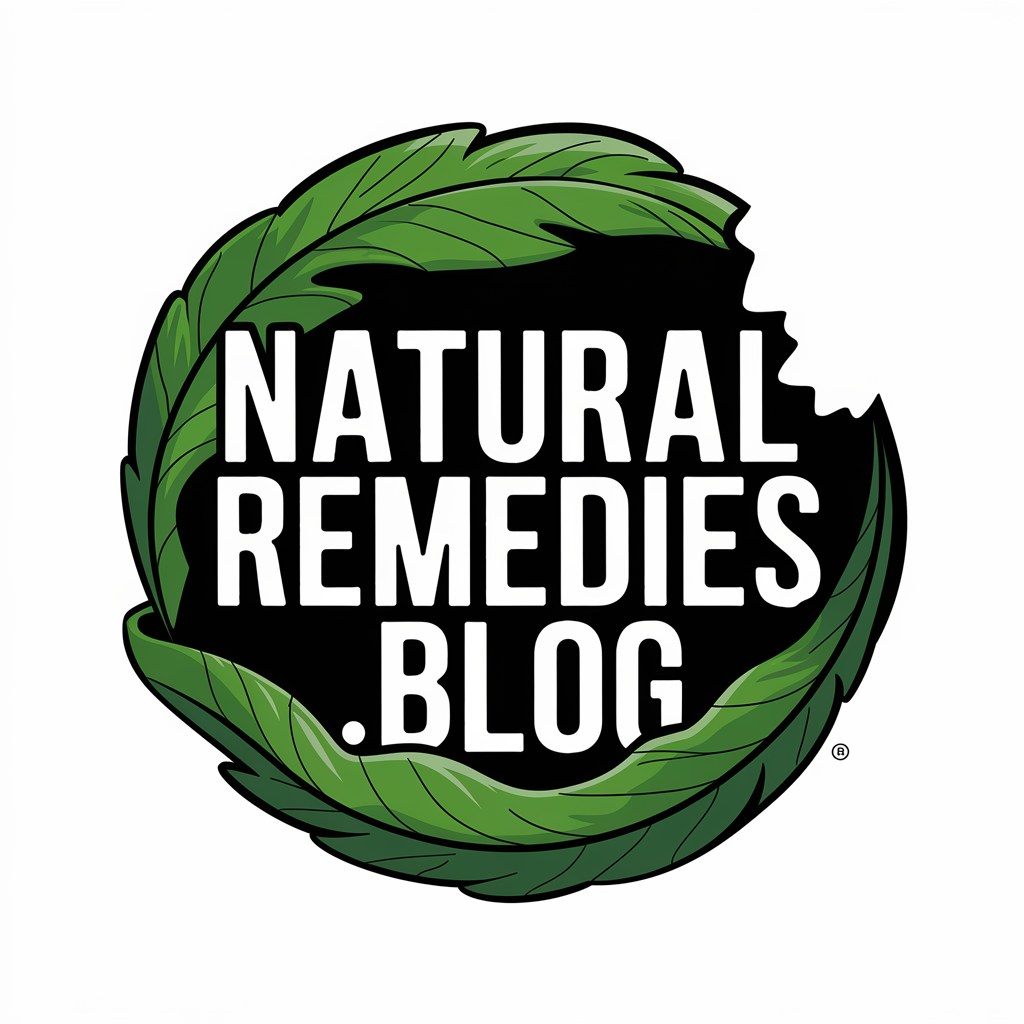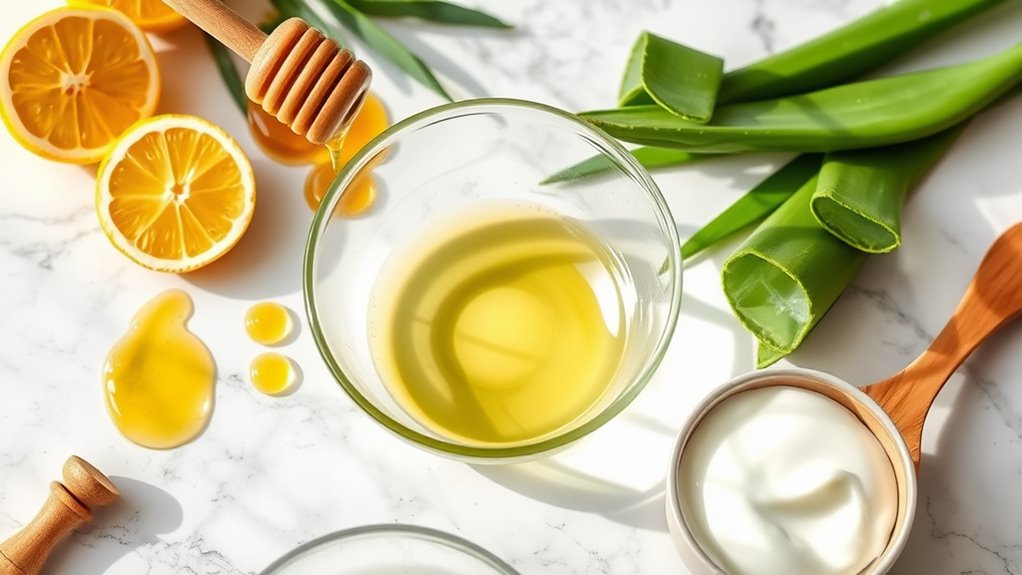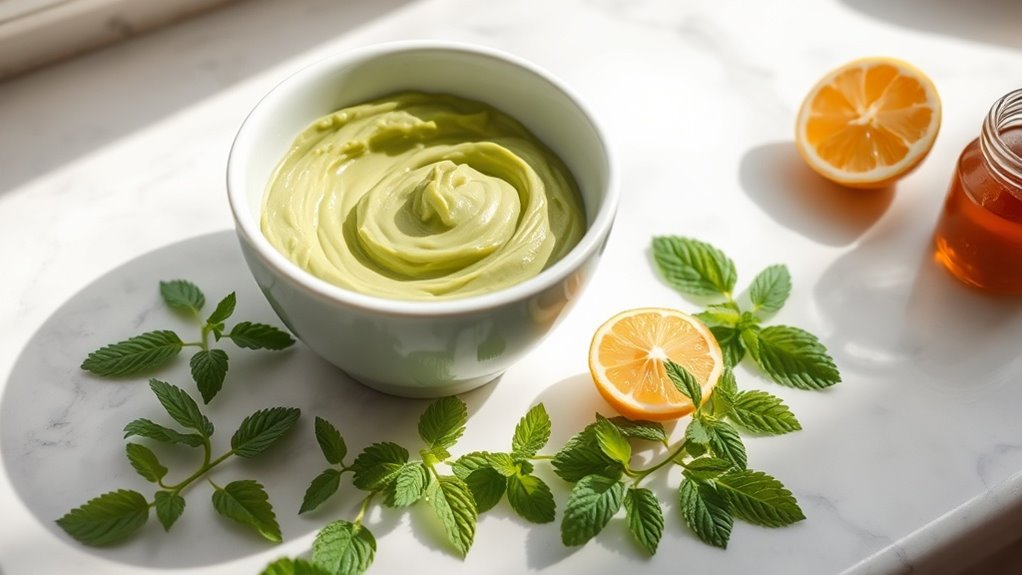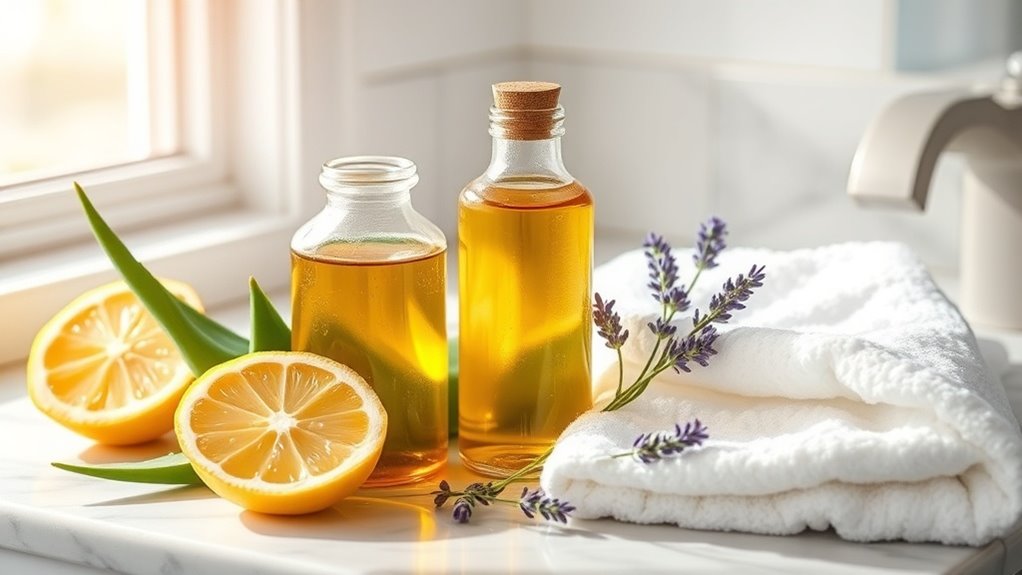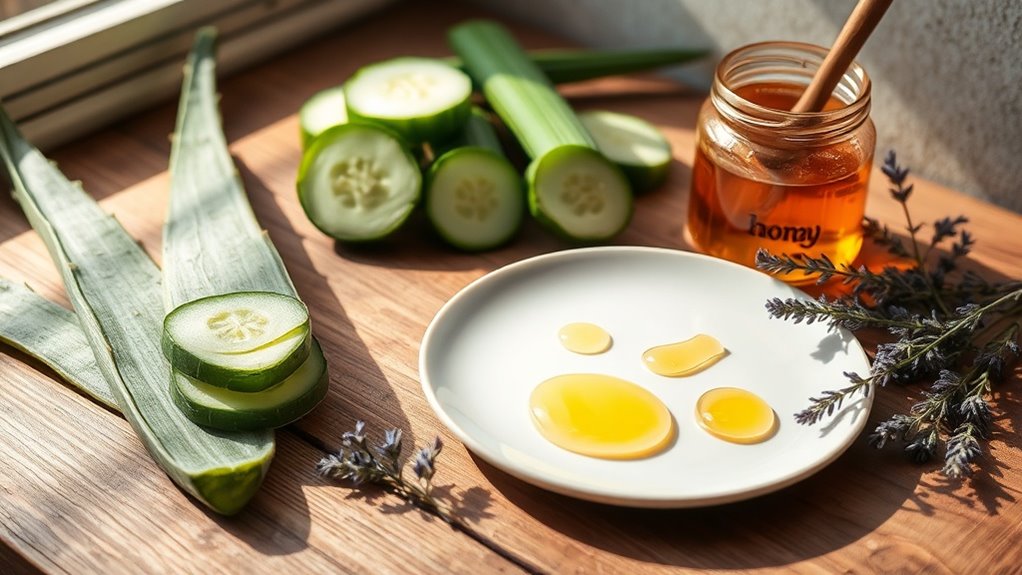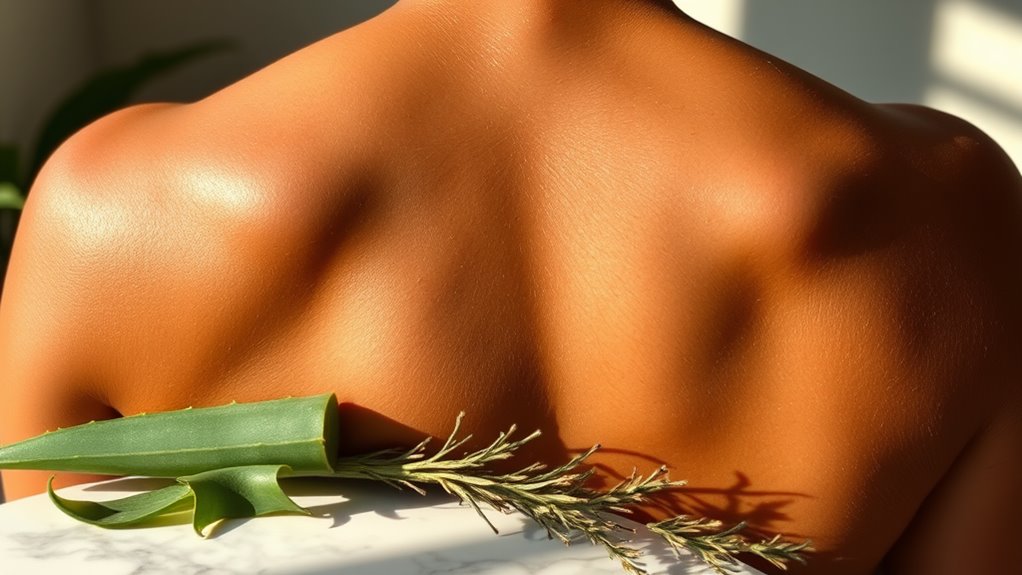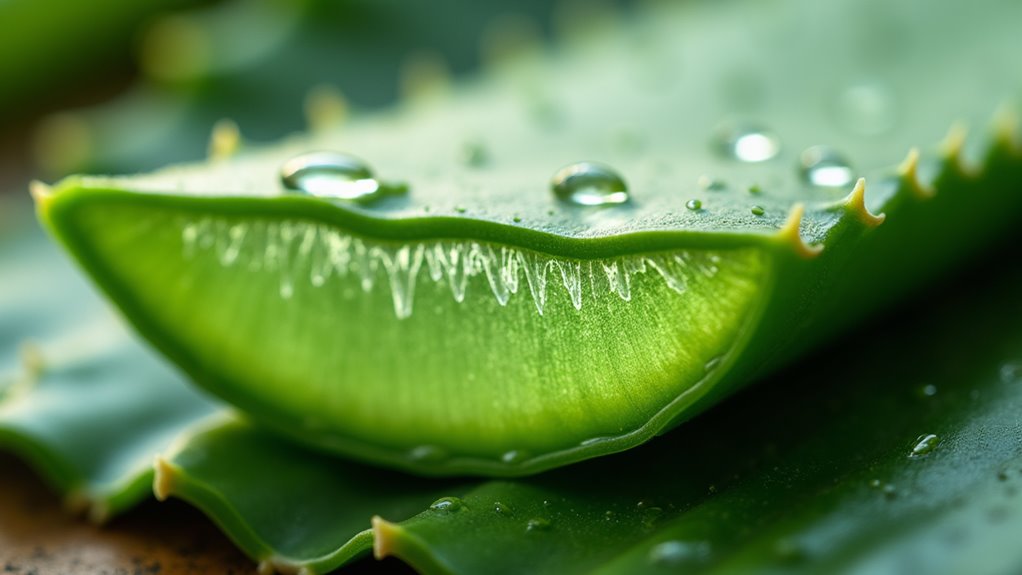Best DIY Remedies for Back Acne You Can Make at Home
You can effectively treat back acne at home using proven natural remedies. Mix tea tree oil (1-2 drops) with a carrier oil for spot treatment, or add 5-10 drops to your body wash for full coverage. Create a soothing mask by combining raw honey with aloe vera gel, and use diluted apple cider vinegar as a pH-balancing toner. When paired with proper hygiene habits, these DIY solutions target bacteria, reduce inflammation, and prevent future breakouts. Learn specific recipes and application techniques to maximize your treatment’s effectiveness.
Understanding What Causes Back Acne
Why does acne appear specifically on your back?
The combination of overactive sebaceous glands and hormonal fluctuations creates an environment where bacteria thrive, particularly C. acnes. Additionally, tight clothing can exacerbate the issue by trapping sweat and bacteria against the skin.
Your back’s large surface area, combined with factors like sweating and tight clothing, makes it especially vulnerable to breakouts. Approximately 50 million Americans experience acne on various parts of their body, with the back being a common trouble spot.
Before exploring back acne remedies, it’s essential to understand that genetic predisposition, hormonal conditions like PCOS, and environmental factors all play significant roles. The presence of dead skin cells, combined with excess sebum production and bacterial colonization, leads to clogged pores and inflammation, making your back particularly susceptible to acne formation.
Essential Natural Ingredients for DIY Back Acne Treatment
You’ll find tea tree oil to be one of the most effective natural ingredients for back acne, as its proven antimicrobial properties help reduce inflammation and prevent bacterial growth that causes breakouts. Additionally, salicylic acid is a key ingredient in many effective acne treatments, known for its ability to unclog pores and promote clearer skin. Regular application of salicylic acid scrubs helps remove dead skin cells and excess oils that contribute to breakouts. Aloe vera’s healing powers work to soothe irritated skin while accelerating the recovery process, making it an essential component in any natural back acne treatment. Honey’s natural antibacterial properties not only help fight acne-causing bacteria but also promote skin healing while maintaining proper moisture balance.
Tea Tree Oil Benefits
Tea tree oil stands as one of nature’s most potent solutions for back acne treatment, backed by extensive scientific research. When diluted properly with carrier oils like coconut or jojoba, it effectively targets the root causes of back acne through its antimicrobial and anti-inflammatory properties. Traditional Aboriginal medicine has long recognized the healing power of tea tree oil for skin conditions.
| Property | Benefit |
|---|---|
| Antimicrobial | Kills acne-causing bacteria |
| Anti-inflammatory | Reduces redness and swelling |
| Antioxidant | Protects skin from damage |
| Oil Control | Regulates sebum production |
| Healing | Promotes skin repair |
For ideal results, use a 3-5% dilution and always perform a patch test. Studies show twice-daily application can noticeably improve mild to moderate acne within weeks, particularly when combined with other natural ingredients like aloe vera.
Aloe Vera Healing Powers
A powerhouse of healing compounds, aloe vera delivers multiple therapeutic benefits for treating back acne through its rich composition of vitamins, minerals, and bioactive substances.
Clinical studies demonstrate significant acne reduction when aloe vera gel is applied consistently over 12 weeks.
Its zinc and vitamin C content stimulates skin cell regeneration, while natural antibacterial agents combat acne-causing bacteria.
The plant’s polysaccharides help tighten pores and prevent clogging, as anti-inflammatory compounds reduce redness and swelling.
You’ll find aloe vera particularly effective at fading post-acne marks and accelerating wound healing through enhanced collagen synthesis.
Apply the gel directly to affected areas or combine it with other natural ingredients for best results.
For thorough treatment, you can complement topical application with moderate internal consumption.
Honey’s Antibacterial Properties
Natural honey stands as one of nature’s most potent antibacterial agents for treating back acne, primarily due to its enzymatic production of hydrogen peroxide and unique chemical composition.
When you apply raw honey to your back, its glucose oxidase enzyme triggers the release of hydrogen peroxide, effectively targeting Cutibacterium acnes bacteria. For optimal benefits, ensure your honey is labeled as raw to preserve its natural therapeutic properties.
Manuka honey offers enhanced antibacterial properties compared to regular varieties.
The honey’s viscous nature creates a protective barrier that maintains skin moisture while delivering peptides and antioxidants that reduce inflammation.
For best results, use unheated, raw honey directly on affected areas or combine it with tea tree oil for amplified antimicrobial effects.
Simple Tea Tree Oil Solutions You Can Make Today
You’ll find creating effective tea tree oil solutions straightforward by following precise dilution ratios: 1-2 drops of tea tree oil mixed with 12 drops of carrier oil for spot treatments, or 5-10 drops per 100ml of body wash for all-over application. Additionally, using tea tree oil can help restore vaginal pH balance, which is crucial for preventing infections.
Beyond fighting acne-causing bacteria, tea tree oil’s anti-inflammatory properties help reduce redness and soothe irritated skin while promoting faster healing of existing blemishes. For quick application to hard-to-reach areas of your back, you can apply your diluted tea tree mixture using a clean cotton pad or add it to your shower routine with a tea tree-enhanced body wash. Studies show this therapeutic grade oil, available at natural food stores and drugstores, delivers the best results.
Tea Tree Mixing Guide
Effective tea tree oil treatments begin with proper dilution ratios to guarantee both safety and efficacy. For back acne, mix 1-2 drops of tea tree oil with 12 drops of carrier oil like jojoba, coconut, or argan oil. Tea tree oil can deliver antibacterial benefits for acne when used properly.
You’ll want to use cold-pressed, 100% pure carrier oils for best results.
Create spot treatments by combining 5-8 drops of tea tree oil per ounce of melted shea butter.
For a soothing gel formula, blend 12 drops of tea tree oil with 2 tablespoons of aloe vera gel and ½ teaspoon of argan oil.
Always patch test your mixture and store in a dark, airtight container.
Benefits Beyond Acne Treatment
While tea tree oil is renowned for treating acne, its therapeutic benefits extend far beyond blemish control.
You’ll find it effectively treats various skin infections, including athlete’s foot and ringworm, while accelerating wound healing through enhanced white blood cell activity.
Its anti-inflammatory properties provide relief from eczema symptoms and help repair your skin barrier.
You can also count on tea tree oil to regulate skin moisture, reduce scarring, and promote an even complexion.
As a natural antiseptic, it protects against infections without harsh chemicals, making it an excellent addition to your skincare routine for maintaining healthy, glowing skin.
Quick Application Methods
Looking for quick and precise ways to harness tea tree oil’s acne-fighting power? You’ll find success with these application methods.
Create a spot treatment by adding one drop of tea tree oil to a damp cotton ball and dabbing it directly on blemishes.
For full-back coverage, add 10 drops to your body wash or mix with water in a spray bottle for post-shower application.
You can also blend 1-2 drops with your regular moisturizer or combine it with aloe vera gel.
Remember to perform a patch test first and never apply undiluted oil directly to your skin.
Powerful Apple Cider Vinegar and Green Tea Remedies
Natural powerhouses like apple cider vinegar (ACV) and green tea offer scientifically-backed solutions for managing back acne.
You’ll need to dilute one part ACV with four parts water to create an effective toner that balances skin pH and fights bacteria. Apply this mixture using a cotton ball to affected areas.
For enhanced results, combine your ACV treatment with a green tea spray.
Steep green tea bags, let cool, and mist onto your back.
The tea’s anti-inflammatory properties complement ACV’s antimicrobial effects. Always perform a patch test first, and consult your dermatologist before starting this regimen. Additionally, the key compounds in ACV, such as acetic acid and probiotics, work together to strengthen the skin’s protective barrier and reduce acne.
Soothing Honey and Aloe Vera Treatment Methods
Combining raw honey with pure aloe vera gel creates a potent yet gentle treatment for back acne. Both ingredients possess powerful anti-inflammatory and antibacterial properties that effectively combat breakouts while soothing irritated skin. To create your treatment, mix 2 tablespoons of raw honey with 1 tablespoon of aloe vera gel. You can add a pinch of cinnamon for enhanced antibacterial effects. Apply the mixture to affected areas, let it sit for 5-10 minutes, then rinse with warm water. While this remedy won’t eliminate deep scarring, it’ll reduce inflammation, prevent new breakouts, and maintain skin hydration. For overnight acne treatments, consult a dermatologist for severe cases.
Daily Habits to Support Your DIY Back Acne Treatment
Successfully managing back acne requires more than just topical treatments – it demands consistent daily habits that prevent bacterial growth and minimize skin irritation.
You’ll need to shower immediately after workouts and change out of sweaty clothes to prevent bacteria from thriving on your skin.
Choose loose-fitting, breathable fabrics and avoid tight clothing that can trap sweat.
Wash your bedding weekly and don’t share personal items like towels or razors.
When cleansing, use gentle, non-comedogenic products and pat your skin dry rather than rubbing.
If you carry a backpack, consider switching to a handheld bag to reduce friction and irritation. Additionally, incorporating antibacterial properties from natural ingredients like coconut oil can help combat acne and skin irritation.
References
- https://www.healthline.com/health/how-to-get-rid-of-back-acne
- https://www.theindependentpharmacy.co.uk/acne/guides/back-acne-treatments
- https://www.medicalnewstoday.com/articles/322455
- https://www.healthline.com/nutrition/13-acne-remedies
- https://www.danishskincare.com/blogs/guides/home-remedies-for-back-acne
- https://my.clevelandclinic.org/health/diseases/22756-back-acne
- https://pmc.ncbi.nlm.nih.gov/articles/PMC9267677/
- https://www.mayoclinichealthsystem.org/hometown-health/speaking-of-health/dont-turn-your-back-on-back-acne
- https://www.dermatologytimes.com/view/all-you-need-to-know-about-back-acne
- https://www.schweigerderm.com/skin-care-articles/acne/back-acne-basics/
